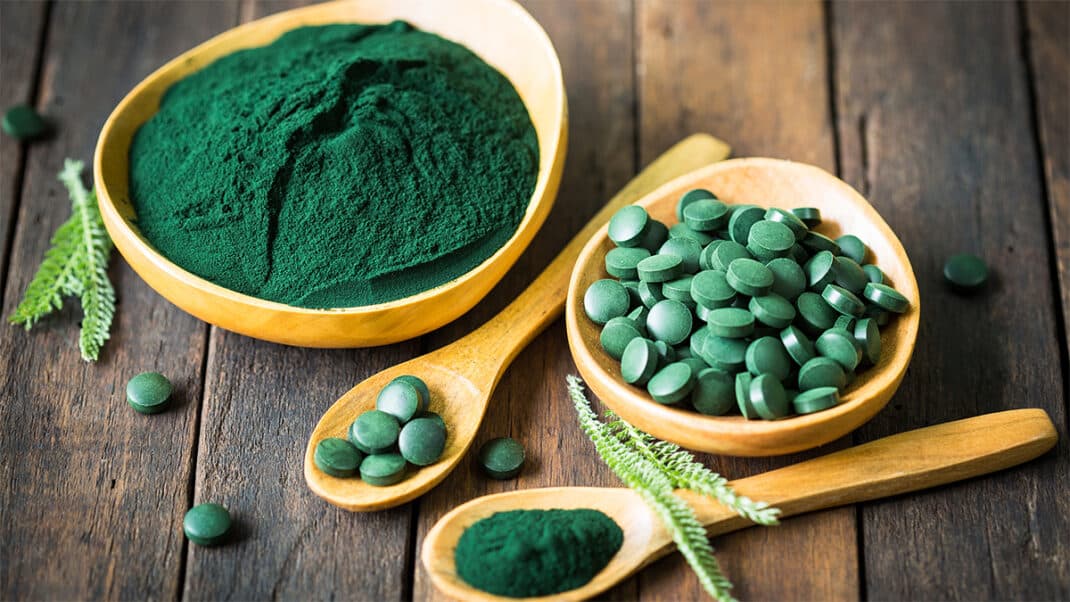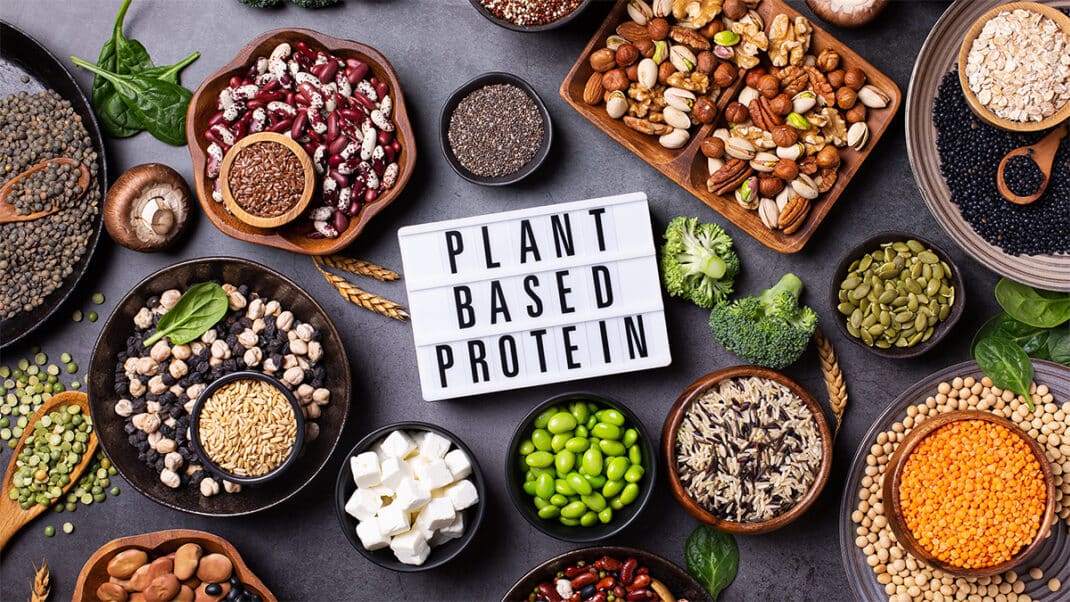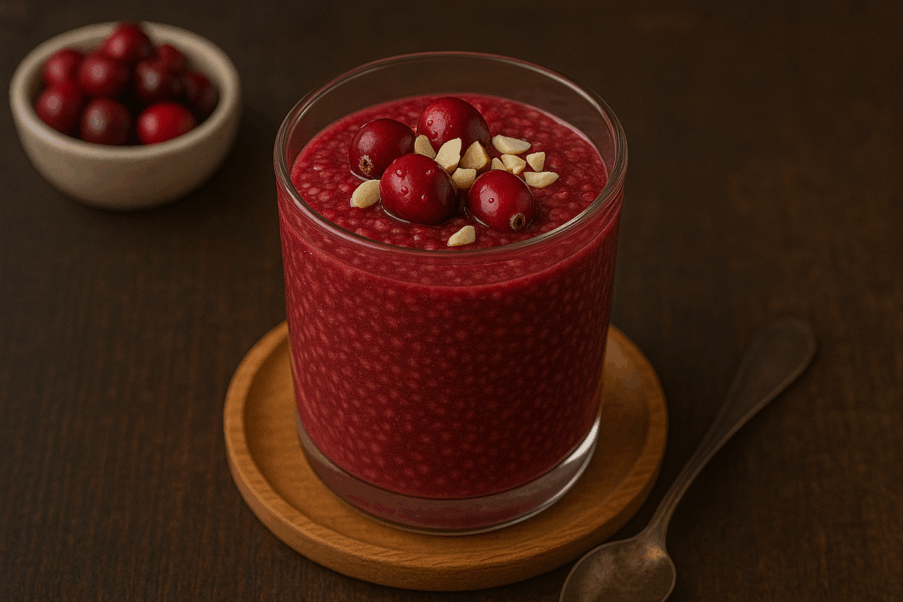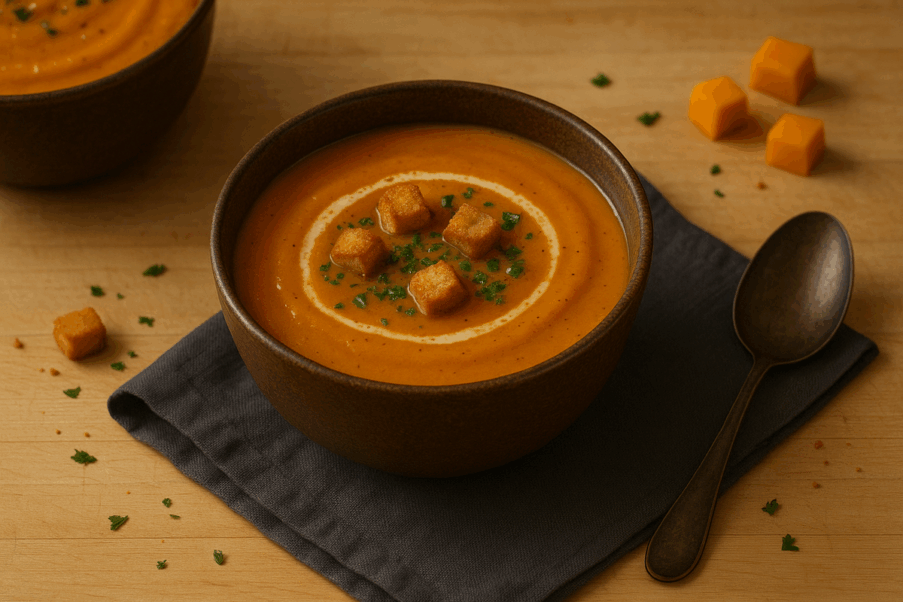
Traditional nutritional theory has served us well, but if we’re looking to accelerate our recovery and adaptation from exercise, it’s time for an upgrade. So, instead of seeing nutrients as just passive substances, the nutraceutical effect recognizes that some nutrient sources can directly cause specific biochemical changes. This concept is not always well understood, but clients often use it in practice. For instance, you might supplement with omega-3 fats, but not saturated fats. Both fats have the same 9 calories per gram, but they have very different impacts on human biochemistry. For this discussion, one noteworthy effect is the direct nutraceutical stimulation of recovery-adaptation, known as muscle protein synthesis (MPS), which can be induced by simply ingesting protein (Shimomura et al. 2006).
To further illustrate this nutraceutical concept and its application, we can explore the impact of ingesting either whole foods or supplements. While protein supplements are often used in research for experimental control and practical convenience, whole foods are a more commonly used vehicle of protein consumption. Studies have shown that the anabolic effects of whole foods may differ from those of their isolated components. The theory is that factors other than protein within the whole food matrix may contribute to their biochemical impact on the body. As an example, a study published in Medicine & Science in Sports & Exercise (Elliot et al. 2006) found that whole milk consumption resulted in a greater whole-body protein synthesis response than skim milk, when matched for calories and protein. Additionally, eating whole eggs has been demonstrated to increase muscle protein synthesis to a greater degree than consuming an equivalent amount of protein from egg whites (van Vliet et al. 2017).
To apply the research, it might be useful to view muscle protein synthesis as the recovery-adaptation response that clients aim for. Although it is often linked to muscle hypertrophy, the response should be considered specific to the training stimulus. For instance, the MPS response from aerobic training will impact not only muscle structural proteins, but also the aerobic enzymes that are related to performance (remember that enzymes are comprised of proteins).
It’s worth noting that the stimulation of MPS can occur outside of exercise, whenever protein is consumed in a fasted or semi-fasted state. A key factor for this effect is an increase of amino acids within your bloodstream caused by feeding, which acts as a signal for muscle to synthesize new proteins (Witard et al. 2014). Although this effect is powerful, it is also short-lived. After 1-2 hours, it becomes refractory, meaning that additional amino acids will not lead to further increases in this muscle protein synthesis-stimulating effect (Atherton et al. 2010).
This ‘auto-storage’ feature of protein may seem bizarre, but it is similar to how other macronutrients work. For example, the physiological response to eating carbohydrates can facilitate their own storage as glycogen. The nutraceutical effect of protein makes amino acids build up in muscle; which is the body’s de facto storage place for amino acids. Using this effect may help improve recovery-adaptation from exercise, which will be discussed below.
How Much Protein?
The daily recommended intake (DRI) of nutrients was established to eliminate malnutrition-based diseases (Yetley et al. 2017). While this implementation has been largely successful, clients often have goals beyond just disease prevention. For those with body composition or performance-based goals, clients typically require much more protein than the DRI, which is set at 0.8g/kg (0.36g/lb) (Wolfe et al. 2017). As a consequence, other guidelines are needed to optimize performance and adaptation to exercise.
There may be situations in which an individual may need more protein than the current recommendations. The adjusted macronutrient distribution score (AMDR) has been developed for this reason. The AMDR provides a range for nutrient intakes as a percentage of total caloric intake, based on the needs of the client (Spano 2016). Using protein as an example, the AMDR is 10-35% of daily caloric intake (Wolfe et al. 2017).
The wide range is designed to afford greater flexibility from which to develop more specific guidelines tailored to the needs of the individual. For example, if a client is consuming more total calories, they will likely need a smaller proportion of this caloric content to come from ingested protein. Notably, protein is important enough that it is reasonable to calculate macronutrient distribution by first establishing protein intake, and then establish the needs of the other macronutrients (Spano 2016).
A wide range of daily protein intakes can be appropriate for different clients, consistent with the application of the AMDR. This flexible approach allows for greater client-centric specificity of nutritional recommendations, in contrast to more traditional methodologies that provide more static suggestions. In this way, nutrition specificity is similar to training specificity for the individual (Thomas, Erdman & Burke 2016).
Some important considerations for determining client-specific protein intake include training age (aka experience), current training phase and goals, food choices and preferences, and total caloric intake. For example, more experienced clients may need less protein than those who are unaccustomed to exercise. Higher volume or more intense training phases will likely require greater protein intake than during a maintenance phase. Vegan clients may need to consume more protein than those with an omnivorous diet due to the reduced essential amino acid content of plant-based proteins (Spano 2016). Lastly, periods of caloric restriction require greater protein quantities to be consumed for ideal preservation of muscle. The latter is such a common occurrence, and has such a profound effect on protein metabolism, that a more robust discussion is explored below.
Protein Limits Per Meal
You may be familiar with the meme that you can only digest 20 (or 30, or 40….) grams of protein per meal. These recommendations are easy to find, but it can be challenging to identify the rationale behind them. This is another area in which an understanding of the nutraceutical effect can help because the protein per meal ‘limit’ is not based on protein digestion or absorption, but on the maximal nutraceutical stimulation of MPS. Specifically, a 20g dose is the smallest quantity required to maximally induce MPS. Doses beyond this will not further stimulate protein synthesis but will increase oxidation (aka burning) of the superfluous amino acids (Moore et al. 2009). This 20g ‘ceiling’ has been identified through research using both whole egg protein (Moore et al. 2009) and whey protein (Witard et al. 2014). A more precise application uses a bodyweight-specific protein dose per meal, which has been suggested as 0.31g/kg (0.14g/lb), to maximally activate MPS (Moore, 2019). Notably, this is consistent with the 1.4g/kg daily dose and the AMDR.
Another factor to consider when determining single-meal dose is how quicky the ingested protein is digested and then absorbed into the bloodstream. For example, the 20g limit of nutraceutical stimulation applies to proteins that are quickly absorbed, such as whey. In contrast, proteins that are absorbed more slowly or consumed within whole food meals (i.e., most of the time) are not intended to cause a rapid nutraceutical stimulation of MPS, and consequently, may not be limited to the 20g quantity. Their effect is a prolonged decrease in muscle protein breakdown, rather than cause a rapid pulse in blood amino acid levels (van Vliet et al. 2018). Because of this, establishing total daily protein intake may be a helpful first step in determining the amount of protein per meal.
Daily Protein Intake
For optimizing the adaptive response from exercise, chronic or daily protein dosing may be the most practical consideration (Morton et al. 2018). A daily protein dose of 1.4-1.7g/kg may be a suitable heuristic for clients, most of the time (Lemon et al. 1992). To afford some flexibility to account for atypical metabolic circumstances, such as an intense training phase, a dose of 2g/kg/d has been suggested, which resides comfortably within the parameters of the AMDR (Spano 2016).
During a calorie-restricted diet, which is often done intentionally to reduce body fat, whole-body catabolism will occur. In this condition of physiological starvation, the body will break down its stored macronutrients, including muscle protein. Specifically, the body will oxidize more amino acids for energy during these periods of energy restriction. Without care, excessive protein loss can reduce lean tissue mass and impair performance (Jäger et al. 2010). During this time, resistance training and an increased dietary protein intake may help mitigate muscle protein loss (Murphy, Hector & Phillips 2015). This muscle-sparing effect has been shown in resistance-trained individuals undergoing 2 weeks of caloric restriction, wherein more lean body mass was retained in those who consumed 2.3g/kg protein compared to those who ingested 1g/kg daily (Mettler, Mitchell & Tipton 2010). Considering the negative impact of caloric restriction on protein metabolism, this is a common situation in which dietary protein intakes may be increased to meet client-specific needs.
Protein Timing
Initially, nutrient timing was considered important with a carbohydrate-based ‘post-workout window of opportunity’. This is the lens through which protein literature was initially viewed. However, a more robust body of research and understanding of the nutraceutical effect has contributed to a higher fidelity understanding. There is no restrictive anabolic window for protein intake after exercise (Cotter & Barr 2012) . Although resistance training increases MPS and the magnitude and duration of the nutraceutical effect, this lasts for at least 24 hours (Burd et al. 2011). But rather than suggesting that protein timing is unimportant, the implication is that the nutrient window is much larger than expected, which affords more opportunity for optimization.
So, although there is not a distinct post-workout period effect like that of carbohydrates, resistance exercise enhances the existing nutraceutical stimulation of MPS (Witard et al. 2014). This elevation in MPS response may provide multiple opportunities for enhanced nutraceutical MPS to facilitate recovery-adaptation.
It has been suggested that clients could take advantage of this nutraceutical effect for maximal daily stimulation of MPS by employing multiple rapidly absorbed protein drinks through the day (Barr, 2008). This pattern would briefly elevate blood amino acid levels to induce the nutraceutical effect, and then allow them to wane to minimize the refractory period. By repeatedly consuming a fast-digesting protein in this pulsatile manner, one might optimize MPS and subsequent recovery-adaptation.
This is a potentially exciting theory, but what does the evidence suggest? Research has shown that consuming 4 meals of 20g whey protein every 3 hours after resistance training, also known as pulse feeding, yields a greater total MPS response than consuming an equivalent amount of whey in two 40g doses or more frequent 10g doses (Areta et al. 2013). Despite the fact that ingesting only 80g over 12h is inadequate for the needs of clients, this research provides an initial step toward establishing optimized feeding protocols.
Protein Timing: Sleep
A time often overlooked for protein feeding is that which occurs shortly before a prolonged sleep-induced fast. It is important to note that the commonly touted idea that ‘sleep is the most anabolic time’ is not only incorrect, but it is also the opposite of reality. This is because during the overnight fasted hours, there is neither the amino acid supply nor caloric energy available to support muscle protein synthesis. Because of these deficits, the body cannibalizes its own muscle tissue to harvest amino acids for ongoing necessary functions (Trommelen & van Loon 2016).
This means that when fasted, sleep often becomes the most catabolic time for clients, which provides an opportunity for improvement. It’s important to note that the catabolic metabolic environment is a result of fasting, not sleeping (Trommelen et al. 2016). From this we may consider that a client’s recovery-adaptation response could be enhanced by eliminating the fast and subsequently preserving muscle protein each night.
Lending credibility to this theory, a study by Res and colleagues (2012) found that consuming 40g of casein (a slowly digested and absorbed protein) before sleep improved whole-body protein synthesis overnight compared to a non-caloric placebo. The research findings illustrate that protein ingested before sleep is digested and absorbed without any impairment from sleep itself.
The overnight research has been followed up by a twelve-week pre-sleep casein supplementation (27.5g PRO, 15g CHO, 0.1g fat) study (Snijders et al. 2015). The slow digestion and absorption of casein ensures a prolonged delivery of amino acids to the body, which makes it ideally suited to the task of mitigating fasting muscle breakdown. In support of this idea, the group that consumed the protein supplement exhibited greater muscle strength and cross-sectional area than the placebo group.
A Refresher Course on Protein

Amino acids are the fundamental building blocks of all proteins. When 2 to 49 amino acids are joined together, the resulting substance is called a peptide. Beyond 49 amino acids, the peptide chain is known as a protein.
When protein is consumed in the diet, it is digested by stomach acid and enzymes and subsequently absorbed from the small intestine into the bloodstream as amino acids or short peptides. These amino acids can be used directly by the body, stored as free amino acids, or synthesized into new proteins. The process of synthesizing new proteins from amino acids is called protein synthesis, which uses DNA as a blueprint. DNA provides the order (or sequence) in which amino acids are joined together to create peptides or proteins.
Dietary protein provides the amino acids needed to create specific proteins within your body as required (Spano 2016). These proteins are constantly being created and broken down within the body. When these processes occur at an equal rate, protein balance is achieved. To manifest physiological adaptations from exercise (such as muscle hypertrophy), the rate of protein synthesis must exceed that of breakdown. For adaptations to occur, both the training stress-stimulus and provision of dietary protein are needed. When resistance exercise happens without protein feeding (i.e., in a fasted state), both muscle protein synthesis and breakdown will increase. The result is a maintenance of protein balance such that no net synthesis will occur.
The human body uses 21 amino acids to create peptides and proteins, which are collectively known as proteinogenic amino acids. This group can be divided into two categories: essential and non-essential amino acids (EAA and NEAA, respectively). The former must be obtained from the diet, while the latter can be created by the body from EAAs. A subgroup of NEAAs can be identified as conditionally essential, meaning that they must be obtained from the diet under conditions of exceptional stress or illness (Fürst & Stehle 2004).
A lesser-known group of amino acids are non-proteinogenic, which indicates that they are not directly incorporated during protein synthesis. Despite their absence in protein synthesis these amino acids are often used in other metabolic processes, and many are sold as athletic supplements (examples include beta alanine and citrulline).
Biochemically speaking, protein-containing foods can be thought of as sources of amino acids. Foods can be classified into two categories, complete and incomplete protein sources, based on their content of essential amino acids (EAAs) and non-essential amino acids (NEAAs).
Complete proteins include animal protein and soy, and these sources contain all 9 EAAs. Incomplete proteins are most often plant-based and do not possess the full complement of EAAs. Vegan clients can obtain all the essential amino acids (EAAs) by consuming a variety of protein sources that collectively contain all the EAAs. One dietary example would be combining cereals and legumes. Cereals are low in lysine have high levels of sulfur-containing amino acids. The opposite amino acid profile exists for legumes. In this way cereals and legumes are said to be complementary protein sources; those that are incomplete but when combined provide all the EAAs.
Protein quality is an important concept related to the amino acid content of proteins. The protein digestibility-corrected amino acid score (PDCAAS) is a common measure of protein quality, which is related to the quantity of specific amino acids it contains (also known as its amino acid profile) and the digestibility of the protein source (Marinangeli & House 2017). For example, a protein that is considered to be of higher quality would contain relatively high levels of the EAAs and be readily digestible. The dairy-derived protein whey exemplifies this type of protein and consequently has a high PDCAAS.
Recently, the digestible indispensable amino acid score (DIAAS) has been developed as a more accurate measure of protein quality and a prospective replacement for the PDCAA. The DIAAS uses direct small intestine absorption as its basis for quantifying absorption, which is thought to be a higher fidelity measure than the fecal measurements upon which the PDCAAS relies.
As with the PDCAAS, a higher DIAAS score reflects greater protein quality, and this prospective transition is under evaluation (Marinangeli & House 2017). Although the exact scores aren’t practically relevant, it’s enough to simply consider the idea of protein quality when choosing protein sources.
5 Protein Sources That Deserve Attention
Collagen
Osteoarthritis (OA) is a condition where joints wear out predominantly due to prolonged wear and tear. This contrasts with rheumatoid arthritis (RA), which is joint damage caused by a pathological autoimmune reaction. Recently, it has been suggested that along with the mechanical stress, the pathology of OA also has an immune-mediated component (Martinez-Puig et al.2023). To put a positive applied spin on this idea, it is possible that blunting such a maladaptive immune response could lead to a mitigation of OA-related pain. This is where collagen supplementation comes into play.
Collagen is a structural protein found in tissues such as skin, bone, and cartilage. It may be helpful to recognize collagen as a class of proteins with different structures, rather than a single specific protein. There are two types of supplements that are relevant for the purposes of mitigating OA: native (undenatured) collagen and collagen peptides. Native collagen is derived from animal sources and is not subjected to any chemical processing. Collagen peptides, on the other hand, are derived from collagen that has been broken down into smaller peptides (i.e., hydrolyzed). Both types of supplements have preliminary evidence suggesting that they could mitigate OA symptoms (Martinez-Puig et al.2023).
Native Collagen
The protein structure of native collagen is largely intact because it undergoes minimal processing. This protein structure is important because it contains sections of the molecule, called epitopes, that are recognized by our immune system. Exposing our immune cells to these epitopes causes an immune reaction called oral tolerance, which at first may seem like a terrible interaction, but it could ultimately dampen an exaggerated inflammatory response like that seen in OA. Ultimately, the desired result is a mitigation of OA symptoms. Early research suggests that consuming 40mg/d of a standardized native collagen (such as UC-II®) has the potential to mitigate OA symptoms (Martinez-Puig et al.2023), but more research is needed before this information evolves into a recommendation.
Collagen Peptides
Series’ of connected amino acid chains derived from collagen are known as collagen peptides. The properties of these peptides depend on their length and amino acid sequence. Consider that if amino acids are like letters of the alphabet, there are many possible combinations of letters that can be used to make words. Similarly, there are many possible variations in peptides, and each variation can have a direct impact on their prospective effects once ingested. Not all collagen peptides are created equal, and while most are simply digested like any other dietary protein, some of these specific peptides can survive digestion intact. These rare peptides can make their way into the bloodstream and then into cells associated with cartilage, called chondrocytes, where they work their magic. Cell-based research suggests that depending on the peptide, a variety of different protective effects can occur (Martinez-Puig et al.2023). Although this may be great for cells, you’re probably interested in human application.
Unfortunately, for collagen peptides to be established as effective supplements, major manufacturing hurdles need to be overcome. Namely, specific peptides need to be identified along with their specialized effects. Further, specific processing details need to be developed, and then standardized, before specific claims can be made for any collagen peptide product. Collectively, this means we’re likely years away from having collagen peptide supplements that provide any direct benefit.
Vegan Collagen
How does an animal-derived product have a vegan alternative? Your instincts are probably correct; it doesn’t. Supplements labeled as vegan collagen do not contain collagen or collagen peptides. These products contain ingredients intended to offer nutritional support for your body’s natural collagen production, such as vitamin C, but are not related to collagen ingestion.
Pig’s Blood
One protein source that has gotten a bit of attention are called heme proteins, best exemplified by hemoglobin, derived from pig’s blood. Although not intended to be used as a source of dietary protein, the potential for this product comes from its ability to deliver highly bioavailable iron (Xing et al. 2022).
It may be surprising to learn that iron deficiency is one of the most prevalent, affecting roughly two billion people. This deficiency is more severe in the developing world where naturally occurring antinutrients in food, such as phytic acid, decrease dietary iron bioavailability. This is where pig’s blood comes in. Nutritionally speaking, iron bound to heme proteins is not susceptible to interference from antinutrients, which means that these supplements have a higher iron bioavailability compared to common (non-heme) supplements (Xing et al. 2022).
Not only could heme-protein supplements have an enormous impact on iron deficiency, but here is also financial incentive to develop a refined large-scale supplement. Consider that these proteins are derived from an existing industrial byproduct that is not only wasted, but actually incurs a cost for its disposal. But turning that loss into a financial gain makes the large-scale development of this concept a lucrative endeavor, which is a powerful incentive to fund research. As you may have surmised, we’re going to hear a lot about pig’s blood protein in coming years.
Sustainability Snapshot

Sustainability is a red-hot topic, especially wither regard to protein consumption, and deserves its own thorough review. For the purposes of this overview, you’ll find highlights about three noteworthy proteins. For context, environmental impact was evaluated using four measures: greenhouse gas emissions, land use, non-renewable energy use, and water footprint (Smetana et al. 2023).
Cell Cultured Meat
This synthesized meat is grown from animal cells. At the cellular level these cultures are identical to those in meat because they are effectively meat. The most obvious conceptual difference is that animal slaughter is unnecessary for each new portion (Bryant, 2020).
Cultured meat has a lower environmental impact (e.g., lower land use requirements and greenhouse gas emissions) than traditional animal farming, but practical issues exist for widespread use become common (Semtana et al. 2023). Environmentally, there are challenges with the scalability of bioreactors used to create the edible cultures. Consumer acceptance is another prospective hurdle, especially when it comes to the unusual texture of the end product.
Mycoprotein
Although it may seem novel, mycoproteins already have widespread acceptance as common foods, such as tempeh and tofu. According to a scientific literature review by Graham & Ledesma-Amaro (2023) there are several potential health-related advantages to mycoprotein, including:
- Probiotic qualities
- Improved nutrient bioavailability
- Lower glycemic (blood sugar) rise
- Toxin removal
- Provision of other nutrients, like vitamins/minerals
Unfortunately, the area of environmental impact is where mycoproteins fall short. Of the protein sources evaluated, only beef had a larger negative impact, which is a massive issue that needs to be resolved before wider adoption (Semtana et al. 2023).
Insects
As opposed to grasshoppers on a stick, insect protein is typically processed into a different form (such as a flour) which can then be added to existing foods to boost protein content. The thought of ‘eating bugs’ may be unpalatable, but in the case of insect protein, adding it to existing foods helps to overcome food neophobia and increase consumer acceptance. From a health standpoint, insect proteins have the potential to positively impact health outcomes, such as hypertension, hyperlipidemia, hyperglycemia, and cancer (Pan et al. 2022).
The best part is that when it comes to sustainability, insect protein is a big winner. For perspective, statistical analysis did not show a significant difference between the impact of insect protein from that of plant-based proteins; the current gold standard (Semtana et al. 2023).
References
Areta, J.L., et al. 2013. Timing and distribution of protein ingestion during prolonged recovery from resistance exercise alters myofibrillar protein synthesis. J Physiol. 591:2319–31.
Atherton, P.J., et al. 2010. Muscle full effect after oral protein: time-dependent concordance and discordance between human muscle protein synthesis and mTORC1 signaling. Am J Clin Nutr. Nov;92(5):1080-8.
Barr, D. 2008. The Anabolic Index: Optimized Nutrition and Supplementation Manual. Montreal: Lepine Publishing.
Bryant, C.J. 2020. Culture, meat, and cultured meat. J Anim Sci. Aug 1;98(8):skaa172.
Burd, N.A., et al. 2011. Enhanced amino acid sensitivity of myofibrillar protein synthesis persists for up to 24 h after resistance exercise in young men. J Nutr. Apr 1;141(4):568-73.
Churchward-Venne, T.A., et al. 2014. Leucine supplementation of a low-protein mixed macronutrient beverage enhances myofibrillar protein synthesis in young men: a double-blind, randomized trial. Am J Clin Nutr. Feb;99(2):276-86.
Cotter, J.A., & Barr, D. 2012. Dietary protein efficacy: dose and peri-exercise timing. In L. Lowery & J. Antonio (Eds.), Dietary Protein and Resistance Exercise (pp. 69-94). Boca Raton: CRC Press.
Elliot, T.A., et al. 2006. Milk ingestion stimulates net muscle protein synthesis following resistance exercise. Med Sci Sports Exerc. 38:667–74.
Fürst, P., & Stehle, P. 2004. What are the essential elements needed for the determination of amino acid requirements in humans? J Nutr. Jun;134(6 Suppl):1558S-1565S.
Graham, A.E., & Ledesma-Amaro, R. 2023. The microbial food revolution. Nat Commun. 2023 Apr 19;14(1):2231.
Jäger, R., et al. 2017. International Society of Sports Nutrition Position Stand: protein and exercise. J Int Soc Sports Nutr. Jun 20;14:20.
Lemon, P.W., et al. 1992. Protein requirements and muscle mass/strength changes during intensive training in novice bodybuilders. J Appl Physiol (1985). Aug;73(2):767-75.
Marinangeli, C., & House, J.D. 2017. Potential impact of the digestible indispensable amino acid score as a measure of protein quality on dietary regulations and health. Nutr Rev, 75(8), 658–667.
Martínez-Puig, D., et al. 2023. Collagen Supplementation for Joint Health: The Link between Composition and Scientific Knowledge. Nutrients. Mar 8;15(6):1332.
Mettler, S., Mitchell, N., & Tipton, K.D. 2010. Increased protein intake reduces lean body mass loss during weight loss in athletes. Med Sci Sports Exerc. 42(2):326–337.
Moore, D.R., et al. 2009. Ingested protein dose response of muscle and albumin protein synthesis after resistance exercise in young men. Am J Clin Nutr. Jan;89(1):161-8.
Moore, D.R. 2019. Maximizing post-exercise anabolism: the case for relative protein intakes. Front Nutr. Sep 10;6:147.
Morton, R.W., et al. 2018. A systematic review, meta-analysis and meta-regression of the effect of protein supplementation on resistance training-induced gains in muscle mass and strength in healthy adults. Br J Sports Med. 52:376–84.
Murphy, C.H., Hector, A.J., & Phillips, S.M. 2015. Considerations for protein intake in managing weight loss in athletes. Eur J Sport Sci. 15:21–8.
Pan, J. 2022. Recent Insight on Edible Insect Protein: Extraction, Functional Properties, Allergenicity, Bioactivity, and Applications. Foods. Sep 20;11(19):2931.
Res, P.T., et al. 2012. Protein ingestion before sleep improves postexercise overnight recovery. Med Sci Sports Exerc. Aug;44(8):1560-9.
Shimomura, Y., et al. 2006. Nutraceutical effects of branched-chain amino acids on skeletal muscle. J Nutr. Feb;136(2):529S-532S.
Smetana, S., et al. 2023. Meat substitutes: Resource demands and environmental footprints. Resour Conserv Recycl. Mar;190:106831.
Snijders, T., et al. 2015. Protein ingestion before sleep increases muscle mass and strength gains during prolonged resistance-type exercise training in healthy young men. J Nutr. 145:1178–84.
Spano, M. 2016. Basic nutrition factors in health. In G.G. Haff, & T.N. Triplett (Eds.) Essentials of Strength Training and Conditioning, 4th ed. (pp. 175-199). Champaign, IL: Human Kinetics.
Thomas, D.T., Erdman, K.A., & Burke, L.M. 2016. American College of Sports Medicine joint position statement. Nutrition and athletic performance. Med Sci Sports Exerc. Mar;48(3):543-68.
Trommelen, J., et al. 2016. Resistance exercise augments postprandial overnight muscle protein synthesis rates. Med Sci Sports Exerc. 48:2517–25.
Trommelen, J., & van Loon, L.J. 2016. Pre-sleep protein ingestion to improve the skeletal muscle adaptive response to exercise training. Nutrients. Nov 28;8(12). pii: E763.
van Vliet, S., et al. 2017. Consumption of whole eggs promotes greater stimulation of postexercise muscle protein synthesis than consumption of isonitrogenous amounts of egg whites in young men. Am J Clin Nutr. Dec;106(6):1401-1412.
van Vliet, S.V., et al. 2018. Achieving optimal post-exercise muscle protein remodeling in physically active adults through whole food consumption. Nutrients. Feb 16;10(2). pii: E224.
Witard, O.C., et al. 2014. Myofibrillar muscle protein synthesis rates subsequent to a meal in response to increasing doses of whey protein at rest and after resistance exercise. Am J Clin Nutr. Jan;99(1):86-95.
Wolfe, R.R., et al. 2017. Optimizing protein intake in adults: Interpretation and application of the recommended dietary allowance compared with the acceptable macronutrient distribution range. Adv Nutr. Mar 15;8(2):266-275.
Xing, Y., et al. 2022. Dietary Heme-Containing Proteins: Structures, Applications, and Challenges. Foods. Nov 11;11(22):3594.
Yetley, E.A., et al. 2017. Options for basing dietary reference intakes (DRIs) on chronic disease endpoints: report from a joint US-/Canadian-sponsored working group. Am J Clin Nutr. Jan;105(1):249S-285S.
David Barr
David ‘Arm’ Barr is an arm-training specialist, helping individuals to develop their most visible, and most impactful body part. His recently published book, Massive, Muscular Arms includes everything from CNS recovery based on his own NASA research, to 21st Century training upgrades. David’s mission is to optimize physique and performance enhancement through innovation, and intellectually honest high-fidelity collaboration, which he shares through regularly published videos. He is revered throughout the world for his prolific use of hyperbole.






